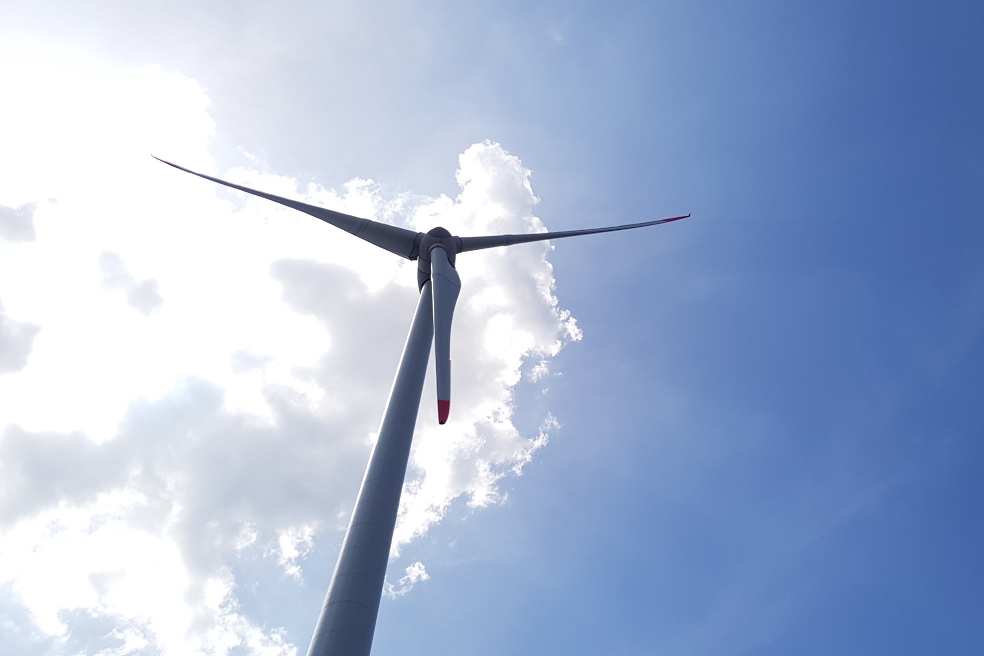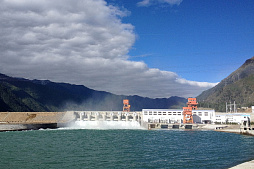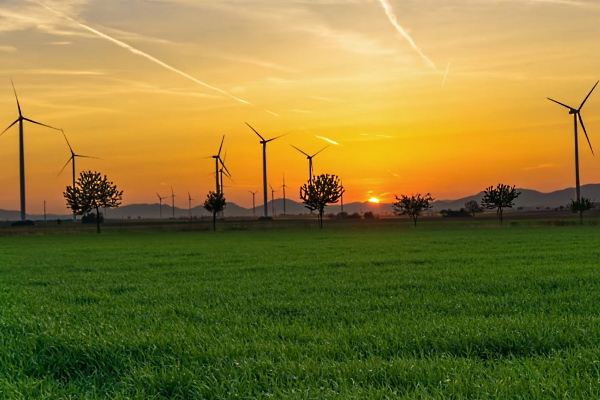After receiving the necessary documents and project presentation, our team will try to review your request as soon as possible, and leading experts will offer the best options for project funding.
In this sector, investments of $ 1.3 billion were planned, thanks to which the country entered the top 3 most attractive wind energy producers in Latin America.
According to AMDEE, the funds will be invested in 11 wind energy projects in Coahuila, Yucatan and Tamaulipas.
Mexico ended 2019 with an installed capacity of 6,237 megawatts (MW) thanks to the construction of new 1,279 MW wind farms during the year.
The goal for 2020 is to exceed the installed capacity of 7,000 MW.
According to the Renewable Energy Country Attractiveness Index (RECAI) of the world agency Ernst & Young Global, Mexico is ranked 24th in the world among the most attractive countries for investment in renewable energy.
In addition, Mexico is the 16th wind energy producer in the world and the 3rd in Latin America after Brazil and Argentina.
The first wind farm in Mexico opened in Oaxaca in 1994, but projects in Tamaulipas, Nuevo Leone, Coahuila, Jalisco, Yucatan, San Luis Potosi, Zacatecas, Baja California, Puebla and Chihuahua are now operating at full capacity.
There are also 3 plants for the production of blades for wind farms.
The main benefits of wind power are as follows:
• Reduction of environmental pollution 250 times compared to coal.
• Minimal maintenance and reduced operating costs.
• Easy integration of wind farms into existing power grids.
• Reducing the economy's dependence on fossil fuel reserves.
• Ensuring energy security in remote areas.
Wind power has already brought numerous benefits to the country and local communities in which green generating facilities are built.
Among these advantages are the growth of the local economy, the creation of highly paid jobs, the development of trade, services, transport and social infrastructure around the wind farm.
However, the greatest benefits of wind energy are related to the environment, as this energy produces virtually no emissions.
Pollutants are generated only during the construction process, but subsequently, harmful emissions are significantly reduced. In Mexico, the industry is helping to cut CO2 emissions by more than 13 million tonnes a year, the equivalent of ditching 3.3 million cars.
The international company GCAM offers long-term financing for the implementation of wind energy projects in Mexico.

Are you interested in project financing or the construction of wind farms in Mexico under an EPC contract?
Contact our representatives to find out more about our financial services.
Assessment of wind energy resources in Mexico
Wind as such is an energy source of a random nature, since its speed, direction and time of exposure depend on the geographic region, time of day, month of the year and the height of the installed wind turbines.This unpredictability is the main reason why wind farms are difficult to use for independent power supply of remote enterprises or settlements. The success of wind energy is largely dependent on the development of energy storage technologies, including high-capacity batteries.
In Mexico, the main wind energy resources are concentrated in specific geographic areas, which include Oaxaca, Hidalgo, Guerrero, Zacatecas and Baja California.
The country's wind potential has not been fully assessed. The United States National Renewable Energy Laboratory has coordinated the development of wind maps for Oaxaca, the Yucatan Coast, Quintana Roo, and the Baja California, Sonora, and Chihuahua borderlands.
These maps were compiled by combining information from meteorological stations with remote sensing techniques.
As part of the Action Plan to Remove Barriers to Wind Energy Development in Mexico, Instituto de Investigaciones Eléctricas (IIE) installed anemometers in different parts of the country and discovered significant wind energy potential in some of them.
The possibility of developing wind energy in Mexico in the short and medium term depends not only on the wind resource, but also on the production capacity and the ability of the electrical system to distribute the generated electricity without compromising its stability and safety.
Mexico is currently experiencing a rapid development of energy infrastructure and renewable energy sources, which offers great opportunities for investors.
Construction of wind power plants in Mexico under the EPC contract
EPC contracting is widespread in the Mexican energy sector.
This type of customer-contractor relationship means that a single EPC contractor must design, build, deliver and install equipment, test and commission the facility.
The EPC contractor is fully responsible for the execution of all work, either from its own resources or through subcontracting.
The customer receives the wind farm or the necessary works at the price agreed at the beginning. The work must be completed on time and fully comply with the criteria specified in the contract.
Thanks to the EPC contract, the customer does not have to allocate time, personnel and resources to coordinate the activities of subcontractors, conduct research and obtain permits.
Study of the wind regime
When it comes to wind energy, the results of studies of the wind regime in the area of the planned construction are of primary importance.There are many places in Mexico where the weather conditions favor wind generation for most of the year.
It is important for engineers to determine not only the direction of the prevailing wind, but also its speed and frequency in different seasons. The measurement period varies depending on the purpose of the project. Measurements are usually taken throughout the year. This avoids the uncertainty and risks associated with this type of investment.
The study of the wind regime is carried out using special equipment, which is installed at the height of the wind generators. The most commonly measured positions are blade tip, midpoint, and hub height.
These points are the most accurate and useful for the engineering design of a wind farm.
After the preparation of the meteorological towers, sensors for temperature, humidity, atmospheric pressure and other indicators are additionally installed.
Since data is collected throughout the year, it is extremely important to carefully monitor the measurement results and analyze their dynamics. Even if the equipment is installed correctly, the measurement process must be controlled. Incorrect results or their interpretation can lead to errors in the final technical documentation and multi-million dollar losses.
Choosing construction site
Engineering companies design wind farms based on the client's budget.The company may find a large area with excellent wind conditions that would give a good return, but the client must find sufficient funds to implement the project.
For this reason, it is important to know in advance the dimensions of the planned construction sites, the characteristics of the terrain and topography, as well as the potential wind turbine models that can be installed within the budget.

The results of geological, geotechnical and environmental studies are also taken into account.
The legal team should investigate the legal aspects of land use and request the necessary permits. It is also important to discuss land use with representatives of the local community.
In addition, the availability of the future wind farm, both by land and sea, should be analyzed and the conditions for connecting to the national power grid should be determined. All these studies are important to ensure the safety of investments.
Based on this initial data, engineers will point out locations in various Mexican states where the project can be implemented with the specified parameters.
The construction of a wind farm requires the participation of a professional consultant who will be responsible for the technical aspects of the project and will prepare specific proposals or the customer.
Guided by many years of experience in the field of energy engineering, our specialists ensure that the wind energy projects developed by the company fully comply with modern technical requirements, national legislation of Mexico and international standards.
Calculation of wind energy production
At the initial stage, it is important to correctly predict the performance of a wind farm, since wind generators will not constantly operate at maximum power. There are many factors to consider, such as the power of the wind turbines, the terrain, and so on.Based on these parameters, special mathematical models will be drawn up that accurately show the expected production of wind energy. These results will be put on the table of the project investors, who must make a decision on its implementation.
The capacity calculated in the first stage does not take into account the electrical losses associated with ancillary installations. In the course of many years of operation of any wind farm, problems can arise that reduce productivity.
Company engineers must travel directly to the construction site to better understand the risks and opportunities of a particular location.
A professional approach minimizes the risks and uncertainties that any wind power project may face.

Construction of access roads
The first process that should be considered in terms of potential environmental impacts involves the delivery of wind turbines and other equipment to the construction site.This requires the construction of access roads that meet certain requirements and are capable of ensuring the safe transportation of large-sized equipment up to 40 meters in length or more.
When implementing projects of this kind, it is recommended to minimize excavation in order to preserve the surrounding landscape and natural ecosystems. Given the remoteness of construction sites from public roads, it is usually necessary to build additional roads to each turbine.
Engineers must comply with numerous requirements for the access roads, including minimum radii of curvature, gradients, widths.
The road surface must be strong enough to withstand heavy trucks.
Some of the access roads will be temporary, and their use will be limited to the first phase of the wind farm construction.
Other roads are being built as permanent roads as they will be used for maintenance and control purposes.
In all cases, the construction of access roads requires compliance with safety rules, restrictions on the movement of vehicles on the site, as well as proper preparation of the site. It is important to prepare in advance areas for storing building materials, working barracks and other buildings.
The amount of excavation work will depend on the orography of the land and the technology of work in each case, and usually they are higher when clearing and leveling the site. The road surface is usually made of non-asphalt materials such as gravel.
In case of crossing of access roads with cable trenches or water pipes, it is necessary to carry out appropriate works to protect them. After completion of works, construction waste and temporary structures are removed.
This stage involves the use of heavy equipment and other vehicles running on gasoline or diesel fuel. Also, construction crews will need a significant amount of water for cleaning and washing excavator buckets and other purposes.
When planning construction, supply channels and storage areas for fuels and lubricants, water, spare parts and consumables should be provided.

Preparation of sites for equipment assembly
Installation of wind turbines is carried out at specially prepared sites.This is a complex process that requires supporting engineering infrastructure.
Heavy construction cranes can be installed on site to lift tower elements, blades and other large pieces of equipment.
Typically this site is over 20 meters long and 15 meters wide, depending on the generator chosen. The surface of the site must be specially prepared to support the weight of the heavy cranes.
Civil construction: main buildings and structures
The most important stage is the construction of operational buildings and structures of the wind farm, as well as the construction of the transformer substation to convert the generated electricity.This stage includes the following works:
• Preparation of storage space for materials and equipment.
• Territory clearing, garbage collection and fence construction.
• Earthwork, including trenching.
• Construction and interior works.
• Delivery and installation of equipment.
• Cleaning of the construction site.
Modern wind farms in Mexico are technically sophisticated facilities that typically include control rooms, administrative buildings, ancillary facilities, water supply and sewerage systems.
Electric installation work
Unlike chemical forms of energy (gas, oil), electricity cannot yet be stored in large quantities.Power generation centers require constant demand, which ensures an optimal balance between production and consumption.

The electrical system of a wind farm is designed to convert and transfer the energy produced by each wind turbine into an electrical grid that supplies nearby consumers.
The electrical system of a wind farm consists of the following elements:
Wind turbine transformers
These transformers can be located inside or outside each tower in prefabricated modular structures, the dimensions of which depend on the type of generator and the number of wind turbines grouped together.Wind turbines and substations are connected by cables that are laid underground in special trenches. In addition, when using oil transformers, pits and systems for collecting transformer oil must be built.
An additional system of cables for control (communication) and power supply of control equipment, lighting and control of the nacelle will also be required.
Medium voltage underground system
A dedicated underground cable network is to connect the wind turbines to each other and to the wind farm substation.MV network layout is based on wind turbine layout, and it is desirable that the cable trench runs parallel to the access roads without crossing them.
MV cables are usually laid in trenches at a depth of more than a meter. Technically speaking, this depth is the result of a balance between two factors, since the proximity of the cable to the surface tends to dissipate heat into the atmosphere, and humidity tends to increase with depth.
It should not be forgotten that every wind generator must have a grounding system.
On-site wind turbine assembly
After the components of the wind turbine are delivered to the assembly site, they are assembled using a heavy crane. In this way, a multi-ton tower, a gondola and a rotor are lifted.
The foundation of the wind turbine is a polygonal concrete support extending several meters into the ground, sometimes additionally reinforced with piles for stability. The choice of foundation is determined by the size and weight of the equipment, as well as the characteristics of the soil.
After assembling and connecting the wind turbines, a group of specially trained engineers performs tests of the wind farm and additional work required for putting the finished facility into operation.
Maintenance of wind farms in Mexico
Wind farm maintenance work is mainly based on periodically monitoring the operation of the wind turbines to detect and correct any problems.In connection with this monitoring, preventive and corrective maintenance plans are established.
Preventive maintenance includes:
• Replacement of underground communications.
• Lubrication of bearings and other moving parts.
• Replacement of damaged parts of existing equipment.
• Inspection of critical items, etc.
To ensure the maintenance of wind farms, it is necessary to create areas for the maintenance and storage of lubricants and spare parts, as well as to ensure the constant presence of a certain number of maintenance personnel, depending on the size of the wind farm.
How much does a wind farm cost in Mexico
The total cost of installing an industrial scale wind power plant can vary depending on the number of wind turbines installed.The final costs are influenced by the type of contract, the average cost of attracting financing, taxes and benefits.
The average cost of such projects today can reach $ 1 million per 1 MW of installed capacity, with equipment for wind farms tending to become cheaper.
When estimating the cost of building a wind farm, differences depending on equipment, terrain and other factors should be taken into account.
The investor should take into account that the maintenance of the wind farm during its life will cost about 1 cent for each kilowatt hour.
In general, construction can take from 1 to 2 years, depending on the size of the wind farm. At the same time, general construction works (sites, foundations and roads) usually take 4-8 months, and installation of wind generators, electrical work and connection to the grid require 8-16 months.
The construction of a wind farm with 10 turbines requires a construction team of about 100 people. Since it is possible to hire inexpensive labor in Mexico, investors can expect significant savings in certain services such as excavation, road construction, and foundation pouring.
Contact us for more information about our investment and financial services.




























